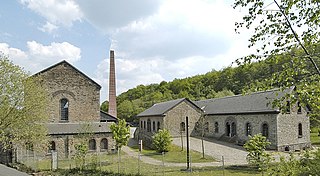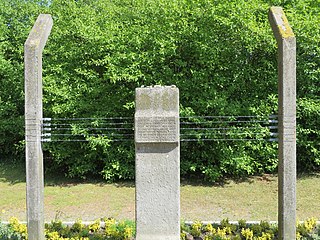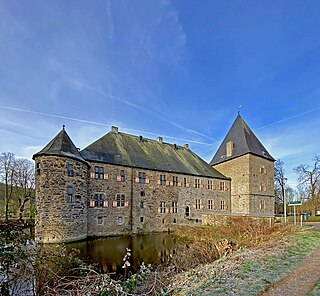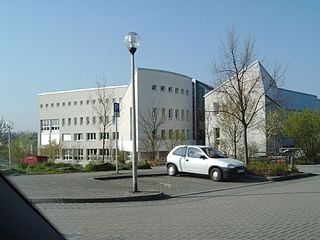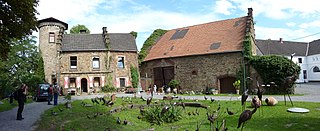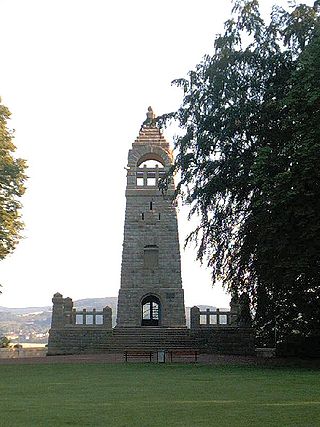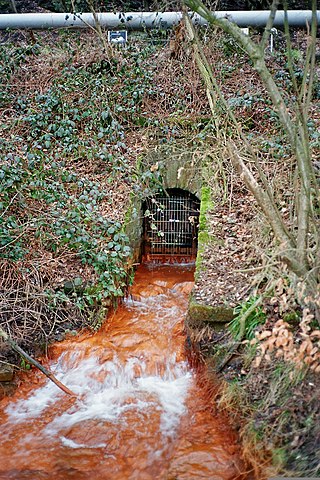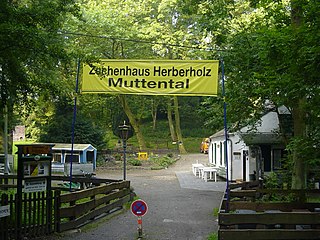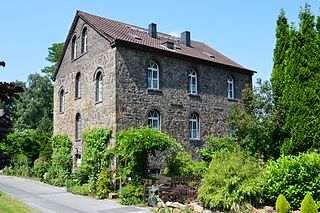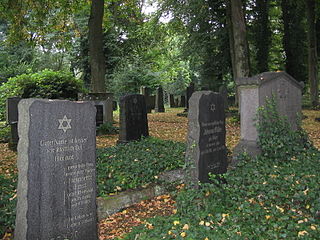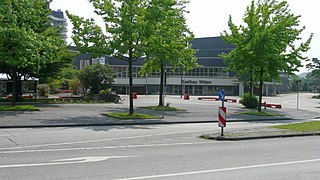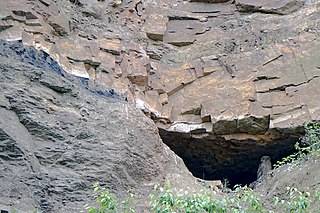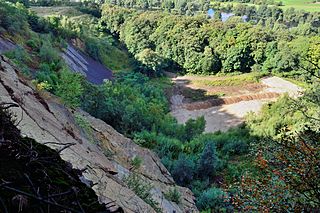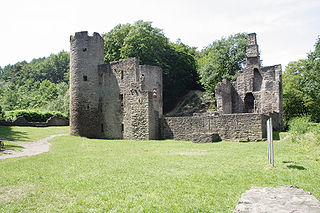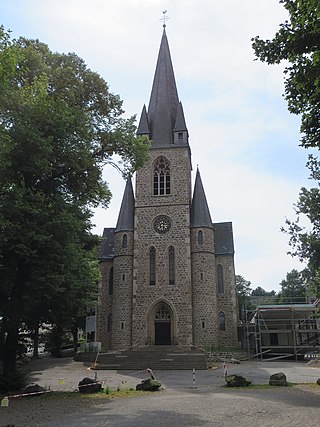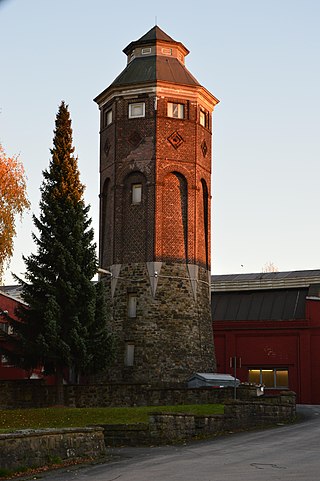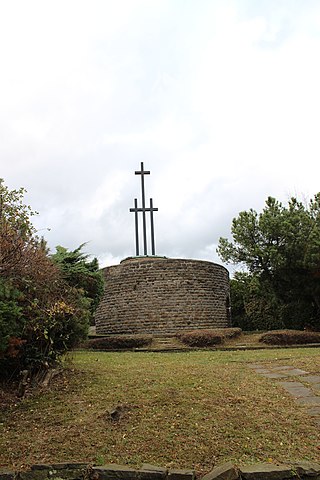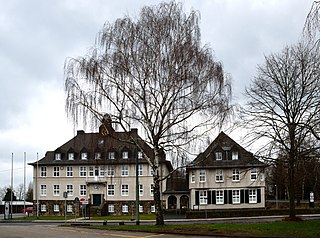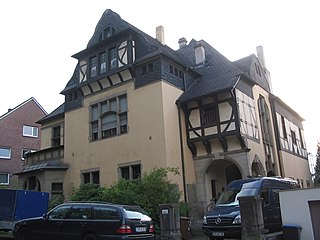35 Sights in Witten, Germany (with Map and Images)
Legend
Welcome to your journey through the most beautiful sights in Witten, Germany! Whether you want to discover the city's historical treasures or experience its modern highlights, you'll find everything your heart desires here. Be inspired by our selection and plan your unforgettable adventure in Witten. Dive into the diversity of this fascinating city and discover everything it has to offer.
Sightseeing Tours in Witten1. Maschinenhaus
The Nachtigall colliery is a former coal mine in Bommern. The mine was also known as the Nachtigal colliery in the Hetberge, the Nachtigall colliery in the Hedtberge, the trade union in the Hedtberge and the coal bank in the Hettberger Holtz. The mine is located in Bommern at the entrance to the Muttental and is part of the Muttental mining trail. The colliery was one of the largest underground mines in the region. At the mine, piece-rich fatty coal was mined in underground mining, which was of good quality. Today, the LWL Industrial Museum Nachtigall Colliery is located on the factory premises.
2. Restfläche KZ-Außenlager
The Annener Gußstahlwerk subcamp of the Buchenwald concentration camp, often referred to as the Witten-Annen subcamp, was a subcamp of the Buchenwald concentration camp in Witten and existed from 16 September 1944 to 28 March 1945. A total of more than 750 prisoners had to do forced labor in the armaments company Annener Gußstahlwerk.
3. Haus Kemnade
Haus Kemnade is a moated castle in the Hattingen district of Blankenstein. Its name – derived from the word "Kemenate" – shows that the aristocratic residence stood out from the surrounding farmhouses at the time by at least one brick chimney.
4. Universität Witten/Herdecke Altbau
Witten/Herdecke University is a private, state-recognized, nonprofit university in Witten, North Rhine-Westphalia, Germany. It was the first German private institution of higher education to receive accreditation as a "Universität", a status recognizing the university's academic quality equivalent to state-run universities and granting the right to award bachelor's and master's degrees, doctorates, and the German Habilitation.
Wikipedia: Witten/Herdecke University (EN), Facebook, Website
5. Castle Steinhausen
Steinhausen Castle is located on the Muttental mining trail in the Witten district of Bommern south of the Ruhr. Its landmark is a round tower on the east side of the castle grounds, which currently lacks a helmet.
6. Berger-Denkmal
The Berger Monument is an observation tower in Witten, North Rhine-Westphalia, Germany. The 21 m high tower is located north of the Ruhr on the foothills of the Ardey Mountains. It is part of the Hohenstein recreation area, located two kilometres southeast of Witten city centre, and part of the Route of Industrial Heritage with Theme Route 12: History and Present of the Ruhr.
7. St. Johannes Erbstollen
The St.-Johannes-Erbstollen is a former Erbstollen in Witten in the districts of Hardenstein and Vormholz. The tunnel is located west of the Muttental. The tunnel was also known under the names Tiefer Johannis Stollen, St. Johannes Erbstolln, St. Johannis-Erbstollen, Johannis Erbstollen and Johannes Erbstollen. Its lower part runs in the valley of an unnamed stream, which is locally called Deipenbecke or simply Hardensteiner Bach. The St.-Johannes-Erbstollen was the most important tunnel in the region and was used to drain water and ventilate the surrounding mines, which were mining hard coal. The Erbstollen belonged to the Märkischer Bergamtsbezirk.
8. Stollen Turteltaube
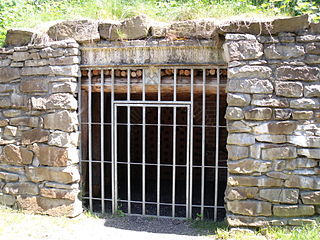
The Turteltaube colliery was a mine in Bommern in the Muttental. The mine belonged to the court of Herbede. The mine was built on two wings, each with a separate tunnel in the nightingale hollow, and was in operation until the middle of the 19th century.
9. Bergbau-Ausstellung Herberholz
The Herberholz colliery is a former coal mine in the Vormholz district of Witten. The colliery was also known as the Vereinigte Herberholz colliery and was created from the consolidation of several tunnels. The consolidation of the mines was carried out by the Obersteiger Herberholz, after whom the consolidated colliery was named. The mine belonged to the Brandenburg mining district and there to the Hardenstein mining district.
10. Germaniadenkmal
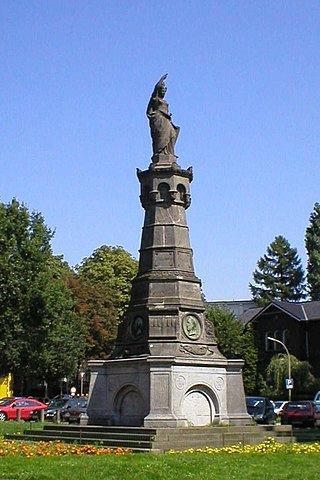
The Germania war memorial in Witten was ceremoniously unveiled on September 30, 1877. In particular, the Guard Warrior Association, founded in 1854, which merged with the Witten Landwehr and Warrior Association in 1858, campaigned for the erection of this monument. On 3 July 1877, the foundation stone was laid on Königsplatz. The monument was designed by the Witten-born architect Heinrich Klutmann, who worked as a high-ranking Prussian building official in Berlin. Its construction cost the city of Witten 18,801.97 marks, which was mainly provided by collecting voluntary donations. The entrepreneur Louis Berger, who had also initiated the erection of the war memorial, donated 100 thalers.
11. Deutsches Gruben- und Feldbahnmuseum
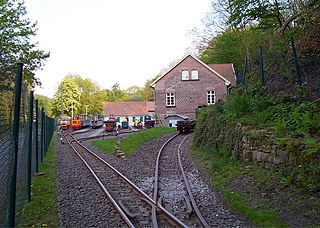
The German Mine and Light Railway Museum is a technical museum in Witten-Bommern in the Ruhr area. It is located below Steinhausen Castle on the site of the Theresia colliery, which closed in 1892, and is part of the Muttental mining trail.
Wikipedia: Deutsches Gruben- und Feldbahnmuseum (DE), Atom, Facebook, Rss, Website
12. Maschinenhaus der Zeche Wallfisch
The machine house of the Wallfisch colliery is a listed building in Witten from around 1850. The building belonged to the Wallfisch colliery and is now part of the Early Industrialisation theme route of the Route of Industrial Heritage. It is located in the Witten district of Stockum/Düren, on Steinäckerweg.
13. Gartenstadt Crengeldanz
The Garden City Crengeldanz is a former factory settlement of the Westphalian tramway in Witten, built in 1913/1914, which consists of 38 fully slate half-timbered houses in the Bergisch style. Large gardens and a small square characterise the village-like character of the settlement, which is now a listed building. In terms of formal aesthetics, the concept of the settlement follows the ideals of the garden city movement developed at the beginning of the 20th century.
14. Helenenturm
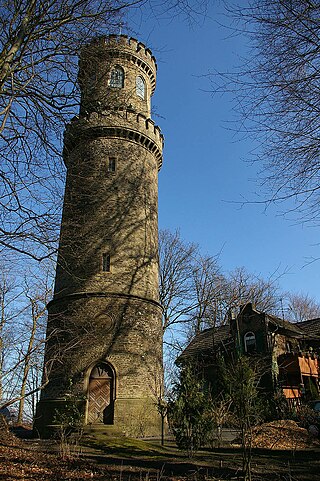
The Helenenturm is a 30-metre-high observation tower in Witten, built in 1858 as a private monument of the judicial councillor Eduard Strohn in honour of his wife Helene Strohn née Lohmann. She died after a lawsuit over ferry fees between the family and the Prussian state. The construction of the tower was financed with the compensation awarded in this process.
15. Haus Crengeldanz
Haus Crengeldanz is a manor house in the Witten district of Crengeldanz, Otto-Seeling-Straße 6. The building used to belong to the free, aristocratic manor of Crengeldanz and has been a listed building since 20 August 1984.
16. Jüdischer Friedhof
The Jewish Cemetery Ledderken is a Jewish cemetery in Witten, Germany. In the closed cemetery of the former Jewish community, there are still about 130 gravestones today. The cemetery is owned by the State Association of Jewish Communities of Westphalia-Lippe. It is registered in the city's list of monuments as an architectural monument.
17. Westlicher Tagetrieb Frielinghaus
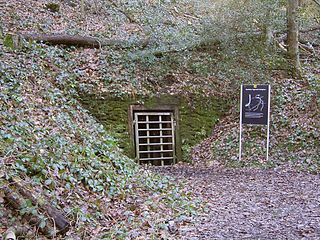
The Frielinghaus colliery in the Vormholz-Hardenstein district of Witten is a former coal mine. The colliery was also known as the Frielinghaus Gerichts Herbede colliery. From 1832, the colliery was also known as the Frielinghaus Tiefbau colliery, Frielinghausen colliery or Frilinghausen colliery. Parts of the mine are now part of the Muttental mining trail.
18. Vereinigungsstollen
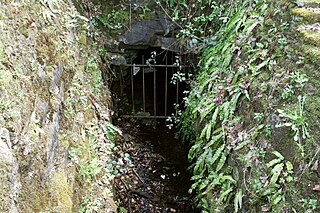
The Vereinigungsstollen is a former tunnel in Witten-Hardenstein. The tunnel was also known as the Compagniestollen or Vereinigungs Förderstollen (Association Conveyor Tunnel). After completion, the tunnel had a total length of around 375 metres transversely and a maximum height of 1.8 metres. The tunnel is still used today to drain the old mine field.
19. Saalbau Witten
The Saalbau Witten is a multifunctional event hall for events for up to 1000 people. With over 250 events such as concerts, plays and conferences every year, the Saalbau reaches around 100,000 visitors. It is centrally located on the outskirts of Witten's city center.
20. Fördergerüst
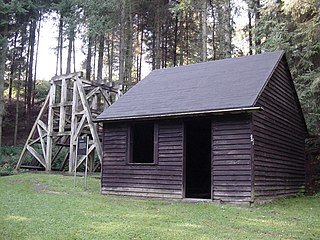
The Renate colliery is a former coal mine in the Vormholz district of Witten. The colliery was only in operation for a few years as a small colliery, the owner of the small colliery was the Renate Bergbaugesellschaft mbH.
21. Steinbruch Dünkelberg
The Dünkelberg quarry is located in Muttental south of the Ruhr in Witten. The quarry was shown in 1984 as a natural monument and on November 25, 1986 as a ground monument. He is connected to the Muttental mining hiking trail.
22. Steinbruch Rauen
The Rauen quarry is a former quarry in the Gedern district of Witten. It cuts the Wartenberg on the northern flank of the Kirchhörder Sattel. The quarry is located in the Ruhr valley within the Witten main basin. Since 2006, the quarry has been part of the Ruhr Area Geopark.
23. Hardenstein Castle
Hardenstein Castle is a ruined castle in North Rhine-Westphalia, Germany. The remains lie east of Herbede on the Ruhr River, surrounded by mountains, and are not easily accessible. Nearby ruins show that the castle was once part of an important mining centre, probably dating to the Middle Ages; the earliest records, from the 16th century, support this. The castle features in the legend of the Nibelungs.
24. Evangelische Kirche Bommern
The Evangelical Church is a listed church building in Bommern, a district of Witten (North Rhine-Westphalia). The parish of Bommern belongs to the Hattingen-Witten church district of the Evangelical Church of Westphalia.
Wikipedia: Evangelische Kirche (Bommern) (DE), Website, Website
25. Villa Ruhrtal
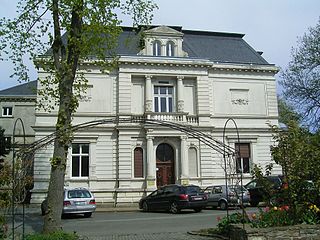
The Villa Ruhrtal is a three-storey, representative entrepreneur's villa at Ruhrtal 5 in the Herbede district of Witten. It was built in 1895 in the style of historicism or neo-Renaissance by Friedrich Brinkmann, who ran the Ruhrtal brewery on the opposite property at Ruhrtal 7. It has been a listed building since 3 September 1984.
26. Zollhaus Herbede
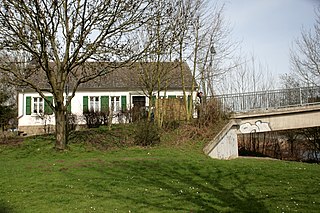
The Zollhaus Herbede is a former Prussian bridge keeper's house from the 19th century and is located directly on the Lake Bridge over the Ruhr on the side of Herbede, Witten. The construction of the house followed the construction of the bridge by Baron von Elverfeldt in 1844. Until 1930, a bridge toll had to be paid when crossing the Lake Bridge. The building now belongs to the company Friedr. Lohmann GmbH. A beer garden was opened in 2013, and an indoor restaurant in 2016.
27. Wasserturm Luhn & Pulvermacher
The water tower of the company Luhn & Pulvermacher and Dittmann & Neuhaus is an architectural monument in Herbede, Witten. It was built from 1919 to 1920 according to a design by Friedrich Däche. It is made of quarry stone and brick and is 23 m high. It was added to the list of monuments of the city of Witten on 23 August 1999.
Wikipedia: Wasserturm der Firma Luhn & Pulvermacher und Dittmann & Neuhaus (DE)
28. Wetterschornstein Buchholz
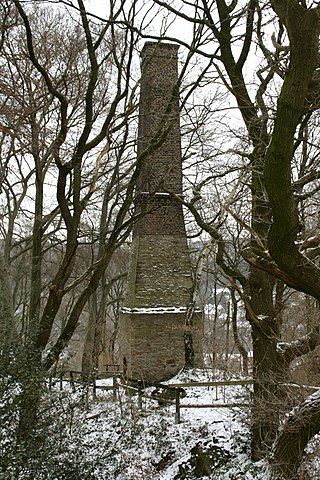
The Buchholz weather chimney is a listed weather chimney of the former Vereinigte Geschwind colliery in the Witten district of Buchholz-Kämpen. It is the last surviving structure of its kind in the Ruhr area.
29. Ehrenmal
The Herbede Memorial is a memorial in memory of those who died in the World War 1914/18 in Herbede, Witten. It was also intended to house the memorial plaques for the fallen of the wars of 1866 and 1870/71. It was created under the leadership of Pastor Kracht. It was built between 1932 and 1934. The inauguration took place on 21 October 1935. Later, the names of those who died at the front in the Second World War followed. The memorial is located on the Küsters Nocken on Bruno-Heide-Straße. It has been a listed building since 31 May 2002. In 20219, there was a need for renovation.
30. St. Joseph
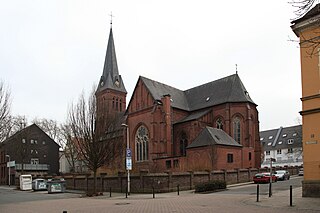
The Roman Catholic, listed parish church of St. Joseph is located in Annen, a district of the city of Witten in the Ennepe-Ruhr district of North Rhine-Westphalia. The parish belongs to the Witten-Ost pastoral association in the Hagen-Witten deanery of the Archdiocese of Paderborn.
31. Rathaus der Medizin
The town hall Herbede managed the once independent city of Herbede, now a district of Witten. It was built around 1900. The Herbede train station is in the immediate vicinity. After the incorporation in 1975, the city library, a police station and non -profit associations such as the DLRG and the Heimatverein Herbede housed. The town hall was converted into a medical center in 2010.
32. Villa Hanf
Villa Hanf is located at Parkweg 14 in Witten. The banker Moritz Hanf and his wife Rebecca Hanf built the house, which is characterized by Art Nouveau, and moved in here in 1903. On Kristallnacht from 9 to 10 November 1938, the Hanfs hid in the basement of their house while the Nazis devastated the house. Two months later, they fled to the Netherlands. Moritz Hanf died in the Netherlands in 1943, Rebecca Hanf was murdered in Auschwitz in 1944. In front of the house, stumbling stones have been commemorating the family since April 4, 2014. The villa has been a listed building since 19 April 1983.
33. St. Peter und Paul
St. Peter and Paul is a Roman Catholic church in the district of Herbede in Witten, Germany. It is located at Meesmannstraße 99 and belongs to the Diocese of Essen. It is the parish church of the parish of the same name.
34. Erlöserkirche
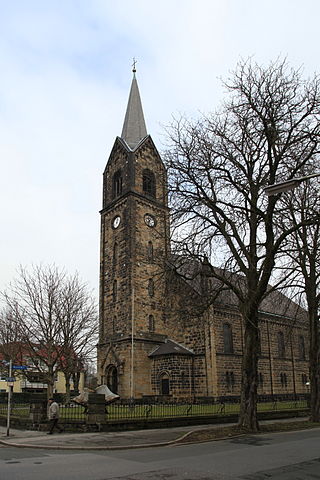
The listed Protestant Church of the Redeemer is located in Annen, a district of the city of Witten in the Ennepe-Ruhr district of North Rhine-Westphalia. The parish belongs to the Hattingen-Witten church district of the Evangelical Church of Westphalia.
35. LWL-Industriemuseum Zeche Nachtigall
The LWL-Industriemuseum Zeche Nachtigall is a technical museum in Witten-Bommern, Germany. The museum, a branch of the LWL Industrial Museum, is located on the old factory site of the Nachtigall colliery at Nachtigallstraße 35–37. Today it is an anchor point of the Route of Industrial Heritage and an information centre of the Ruhr Geopark.
Wikipedia: LWL-Industriemuseum Zeche Nachtigall (DE), Facebook, Website, Youtube
Share
Disclaimer Please be aware of your surroundings and do not enter private property. We are not liable for any damages that occur during the tours.
